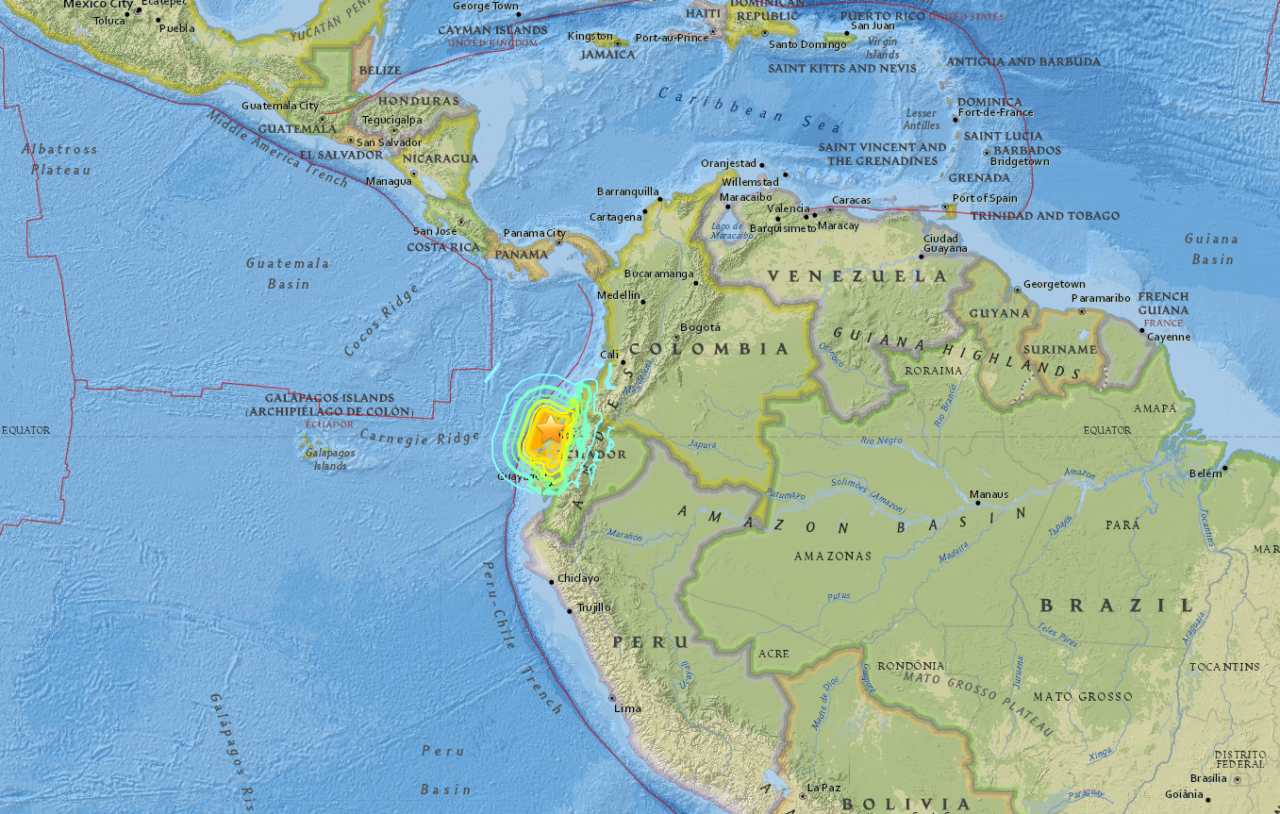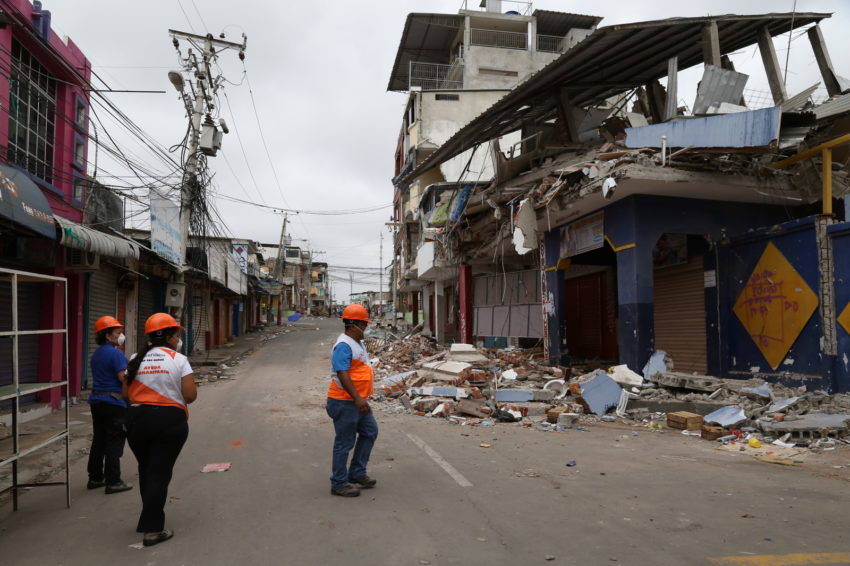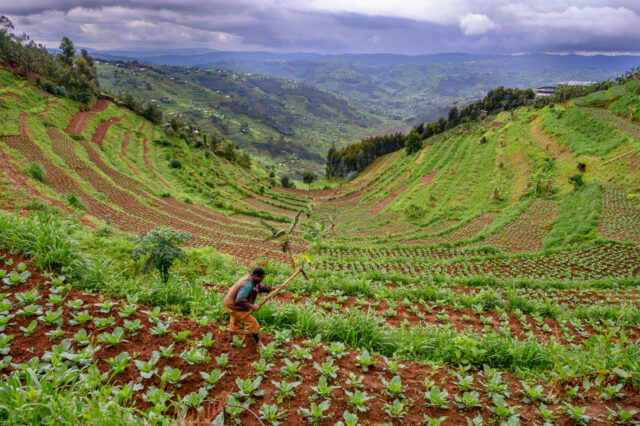A magnitude 7.8 earthquake rocked Ecuador’s coast April 16, 2016 — killing almost 700 people and leveling homes, schools, and infrastructure. More than 6,000 people were severely injured. The quake’s epicenter was offshore about 17 miles from the town of Muisne in Manabí province and 100 miles northwest of Quito, the capital.
The worst-affected provinces were Manabí, Esmeraldas, Santa Elena, Guayas, Santo Domingo, and Los Rios. After the quake, more than 700,000 people needed assistance. An estimated 35,000 houses were destroyed or badly damaged, leaving more than 100,000 people in need of shelter. Water, sanitation, and healthcare facilities were also destroyed.
“This is the worst earthquake to strike Ecuador since 1987 when 1,000 people were killed. It was a truly terrifying event felt across the country,” said José Luis Ochoa, World Vision’s national director in Ecuador, in the days after the quake. Ecuador, which is located along the Pacific Ring of Fire, experiences many small earthquakes each year.
2016 Ecuador earthquake timeline
2016 — Earthquakes and other hazards
- January 2016: Torrential rain, floods and landslides from El Niño conditions affect many impoverished families in Manabí province.
- April 16: A magnitude 7.8 earthquake strikes northern Ecuador.
- May 19 & July 10: Severe aftershocks in the same area set back recovery efforts.
- July: An outbreak of the Zika virus is likely worsened by flooding and people living outside after the quake; 80% of cases are in Manabí.
- October: About 16,000 people are still displaced from the April quake.
- December 19: A magnitude 5.8 quake hits northwest Ecuador, creating more humanitarian needs.
2017 — Struggling to recover
- February: A state of emergency is declared in Portoviejo due to rains and flooding
- June 30: A magnitude 6.3 earthquake strikes off Manabí province coast, an area still recovering from 2016 quake and El Nino rains.
FAQs: What you need to know about the 2016 Ecuador earthquake
Explore frequently asked questions about the Ecuador earthquake, World Vision’s response, and learn how to help people recovering from disasters.
- Fast facts: 2016 Ecuador earthquake
- What types of natural disasters occur in Ecuador?
- What is life like for children in Ecuador?
- How can I help children and families in Ecuador?

Fast facts: 2016 Ecuador earthquake
- The quake killed nearly 700 people and severely injured more than 6,000.
- Most of the quake’s force was concentrated in Manta, Pedernales, and Portoviejo, in Manabí But residents of the capital Quito felt it strongly too.
- Out of 7 million people in the worst-affected provinces, 700,000 needed immediate assistance.
- Damage was estimated at $2 to $3 billion, with 90 percent of infrastructure destroyed in some areas.
What types of natural disasters occur in Ecuador?
Ecuador is located along the Ring of Fire and is an area of intense seismic activity, which means it’s at risk of earthquakes, tsunamis, and volcanic eruptions. In the past 120 years, at least seven earthquakes of a magnitude 7 or above have occurred within 150 miles of the site of the massive 2016 quake. Eruptions of Cotopaxi volcano in the Andes, most recently in 2015, has caused earthquakes too.
Ecuador is also prone to other natural hazards, including drought, flooding, landslides, and forest fires.
What is life like for children in Ecuador?
Children in Ecuador today benefit from many development achievements of the past 20 years. The nation met its Millennium Development Goals by 2015, reducing extreme poverty, increasing access to education, and improving health and gender equity. However, there is still room for improvement, especially for indigenous people, who make up about 7 percent of the national population.
Indigenous groups are more likely than others to experience poverty, violence, trafficking, and child labor. About 25 percent of Ecuador’s children suffer from chronic malnutrition, but among indigenous groups, more than 42 percent are malnourished.
The legal age of marriage in Ecuador is 18, yet 22 percent of girls marry before they are 18. These girls are more likely to drop out of school and bear children at an early age, endangering their health and perpetuating a life of poverty.
How can I help children and families in Ecuador?
- Pray: Lift up children and families affected by poverty and disasters in Ecuador.
- Give to World Vision’s disaster relief fund: Your gift will help provide emergency food aid, agricultural support, clean water, medicine, and other essential care to children and families affected by disasters like the 2016 Ecuador earthquake.
- Sponsor a child in Ecuador: Help change a child’s life story and help their family and community with food, healthcare, clean water, education, and more.
World Vision’s work in Ecuador
World Vision began operations in Ecuador in 1978, serving rural indigenous peoples with programs for health, education, and community infrastructure. Our focus is still on improving children’s lives in the communities we serve.
World Vision participates in Ecuador’s Humanitarian Country Team, a disaster response coordinating body made up of representatives of government, United Nations, and humanitarian organizations. World Vision was the lone humanitarian member of the government’s response coordinating body.
World Vision has a strong operational presence in Manabí province, near the epicenter of the 2016 earthquake. At the time of the quake, we were providing aid to communities experiencing flooding. We rapidly stepped up relief to assist newly displaced children and families with basic necessities: food, water, hygiene, and shelter. Child-Friendly Spaces, shelter repair materials, household goods, and psychosocial support followed.
As the result of World Vision’s work in 16 municipalities, at the end of two years:
- 124,250 Ecuadorians received aid
- 8,689 hygiene kits and 620 food kits were distributed
- 3,392 children attended 22 Child-Friendly Spaces
- 11,374 water kits and 50 water purifiers were delivered and 24 1,000-liter water tanks were installed
- 5,146 shelter kits, 314 home-repair kits, 4,445 kitchen sets, and 1,000 tarpaulins helped families return home
- 33 families used cash transfers to build interim shelters




